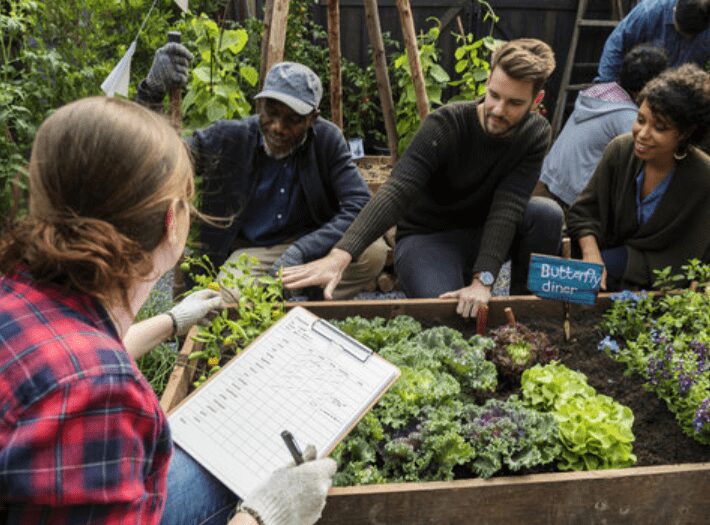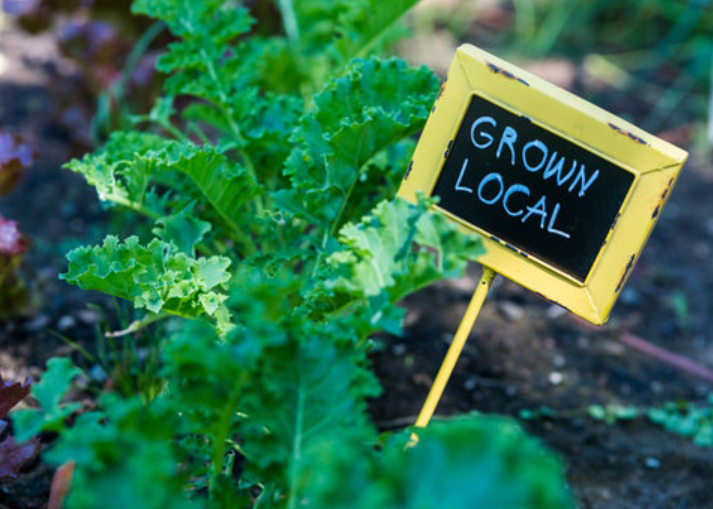
This step-by-step guide teaches how to start a community garden in Your Neighborhood. Discover the benefits, gather support, choose a location, secure funding, and more. Bring your community together while promoting a healthy and green environment!
Starting a community garden in your neighborhood is an excellent way to unite people, promote healthy eating, and create a beautiful space for everyone to enjoy.
Benefits of a Community Garden
Social Benefits
Community gardens foster social interaction and a sense of community among neighbors. They provide a space for people to work together, share knowledge, and form lasting friendships.
Environmental Benefits
Community gardens help reduce the carbon footprint of a neighborhood by providing locally grown produce, reducing the need for transportation. They also increase green spaces, contributing to cleaner air and helping combat the urban heat island effect.
Health Benefits
Growing your fruits and vegetables can encourage healthier eating habits and provide access to fresh, nutritious produce. Gardening is also a form of physical activity which can help reduce stress and promote overall well-being.
Steps to Start a Community Garden
Gather Support
Begin by talking to your neighbors, friends, and local organizations about starting a community garden. Gauge interest, gather ideas, and form a core group of volunteers who will help make the garden a reality.
Choose a Location
Find a suitable location for the garden. Consider factors such as sunlight, water access, and soil quality. Ensure the land is available for use and obtain any permission from the landowner or local government.
Secure Funding
Determine the cost of starting and maintaining the garden, and identify potential funding sources. These may include grants, local businesses, or fundraising events.
Create a Garden Plan
Develop a plan for the garden, including the layout, types of plants, and any additional features such as benches or paths. Involve your core volunteers in the decision-making process to ensure everyone’s ideas are represented.
Set Up Garden Rules
Establish rules for the garden, such as hours of operation, membership fees, and guidelines for planting and harvesting. These rules will help create a harmonious environment and prevent conflicts among gardeners.
Establish a Leadership Team
Form a leadership team to oversee the garden’s operations and address any issues. This team should include a mix of experienced gardeners and enthusiastic newcomers.
Prepare the Site
Once you have the necessary permissions and funding, prepare the site by clearing debris, testing the soil, and installing any required infrastructure, such as irrigation systems or fencing.
Plant and Maintain
Now it’s time to plant and maintain your community garden. Encourage garden members to choose various plants, including fruits, vegetables, herbs, and flowers. Assign plots to individuals or groups, and ensure everyone is responsible for maintaining their area.
Sustaining Your Community Garden
To ensure the long-term success of your community garden, keep the momentum going by organizing events and workshops, celebrating successes, and regularly communicating with garden members. Encourage new members to join and ensure the garden is accessible to everyone in the neighborhood.

Conclusion
In conclusion, starting a successful community garden in your own neighborhood is a rewarding project that can benefit local community members. By working together, community members can transform an empty space into a thriving garden site with fruit trees, garden beds, and plots for individual families.
Community gardens provide a fantastic opportunity for people to come together, share resources and knowledge, and grow fresh fruits and vegetables that can significantly increase fruit and vegetable intake among residents.
Many community gardens also include unique features such as children’s gardens, spaces for organic gardening, and sustainable agriculture practices.
As you embark on this journey, remember that establishing a strong foundation through gathering support, selecting a good site, raising funds, and involving community leaders is crucial for success.
Additionally, manage weeds, maintain garden beds, and keep your watering and weeding schedule consistent to ensure a thriving garden throughout the growing season.
Finally, don’t forget the importance of fostering a sense of community and pride in your garden. Organize group meetings, collaborate with local schools, churches, and parks, and involve interested people in the planning and maintenance of the garden.
With dedication, hard work, and a little bit of green thumb magic, your community garden can serve as a shining example of what can be achieved when communities come together to create something beautiful and beneficial for all.

FAQs
What kind of plants should we grow in a community garden?
Choose a mix of fruits, vegetables, herbs, and flowers suitable for your climate and soil conditions. It’s a good idea to include plants that are easy to grow and maintain and have a high yield.
How can we prevent conflicts among garden members?
Establish clear rules and guidelines for the garden, and ensure everyone knows them. Encourage open communication and address any issues promptly. The leadership team should be available to mediate disputes if necessary.
What if we don’t have access to suitable land for our community garden?
Consider alternative options such as container gardening or partnering with a local organization with available land. Some cities also have programs that allow residents to use vacant lots for community gardens.
How can we ensure the garden is accessible to everyone in the neighborhood?
Make sure the garden is located in a central, easily accessible area. Consider creating raised beds or installing pathways to accommodate people with mobility challenges. Offer workshops and educational opportunities for those who may be new to gardening.
What are some ways to secure funding for our community garden?
Possible funding sources include grants from government agencies or foundations, donations from local businesses, and fundraising events such as plant sales or garden tours. Be creative and persistent in your efforts to secure funding.






















